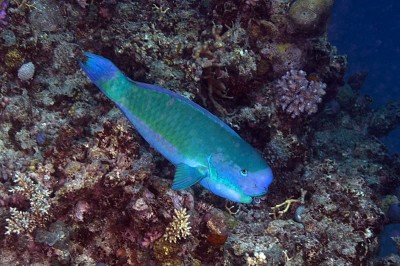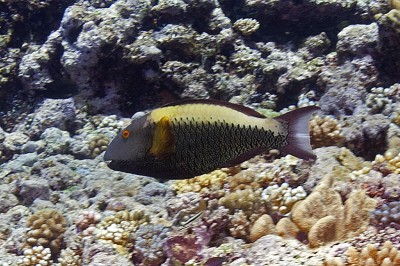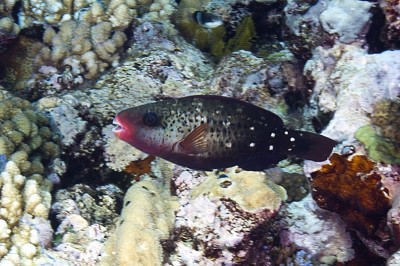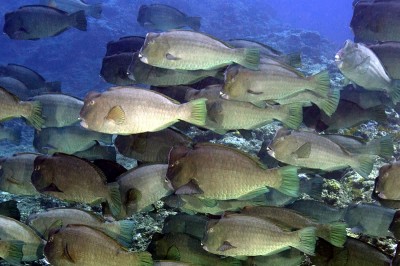Parrotfishes represent one of the most conspicuous members of the Indo-Pacific coral reef fauna. They are ideal study subjects for addressing questions regarding population and community ecology for several reasons, including their high diversity and abundance, complex reproductive life histories manifested through distinct male/female color phases, and their spatial distribution on many scales. As grazers and bioeroders of reef substrate, they are regarded for their trophic and structural influence on the benthic biota. However, parrotfishes are also heavily exploited in artisanal and commercial fisheries throughout their range.

Steephead Parrotfish, Chlorurus microrhinos.

Bicolor Parrotfish, Cetoscarus bicolor.
In this expedition, scientists are using diver-operated stereo-video technology to survey parrotfish communities and derive high-resolution length measurements of individuals across mid- and outer-shelf reefs of the Great Barrier Reef, one of the few regions globally where parrotfishes are not harvested. This information will facilitate a better understanding of the spatial distribution of species assemblages, demographic comparisons with other bioregions and the relationship between environmental factors and life-history traits.

Bullethead Parrotfish, Clorurus sordidus.

Bumphead Parrotfish, Bulbometopon muricatum.
Photos by Ken Marks.
